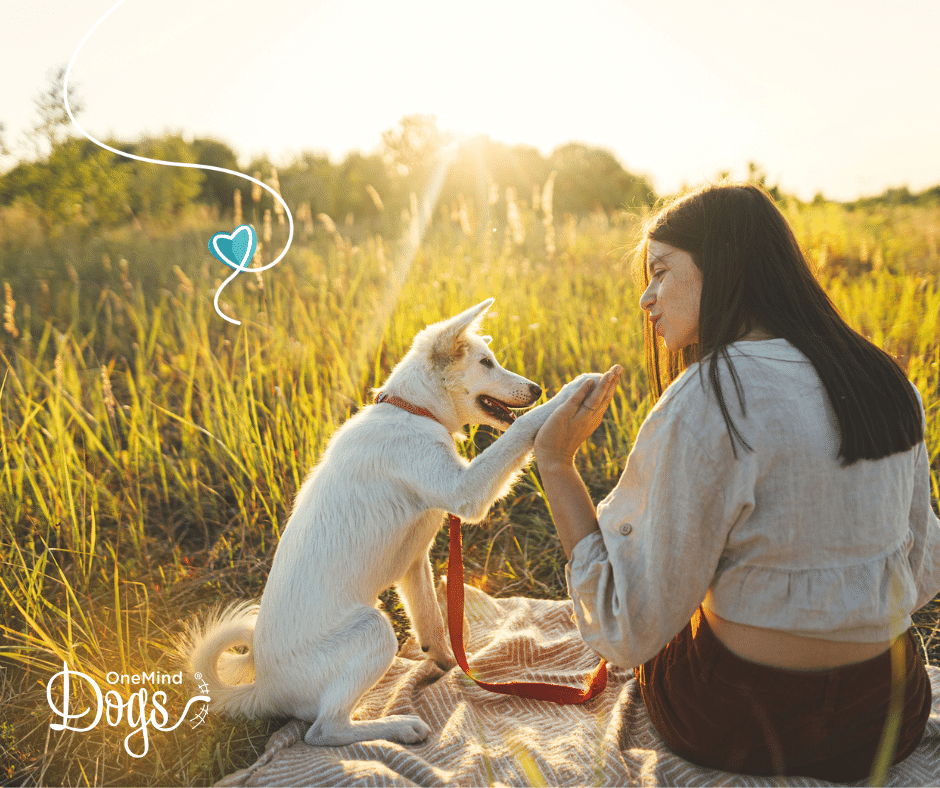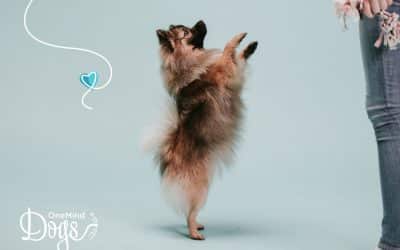If your puppy is scared of other dogs, you may be feeling frustrated and helpless. You might even be blaming yourself for your dog’s fear, wondering “What did I do wrong?”. Don’t worry – you’re not alone!
This is a common issue that many puppy owners face. It can be challenging to help your puppy overcome this fear if you don’t know where to start.
Understanding your puppy’s point of view makes getting him comfortable around other dogs much easier. When you understand your dog’s perspective, you can see why they are being fearful and how to help them feel more confident and happy in the presence of strange dogs.
Develop trust and a connection with your puppy

As a puppy owner, it’s important to remember that your pup is looking to you for guidance and protection. This means you must be careful about who you allow your puppy to interact with. Choose dogs that you know to be calm and well-mannered. If you don’t know a dog’s temperament, it’s better not to encourage your dog to approach them.
Introduce your puppy to other dogs slowly and carefully, observing closely to see if they are a good match. Ideally, walk your dog side-by-side on leash with another dog first, without the two of them interacting directly. Get a sense of their energies and feeling towards each other before deciding if they should interact directly. This will instil a feeling of safety and trust in your puppy and give them confidence to approach the other dog.
Your puppy shouldn’t interact with every dog you see on your outings. You need to be the main focus for your dog, if you want to have a healthy and happy connection with your dog, aim for them to interact with 1 out of every 10 dogs you see. The rest should just pass by with no fuss. Dogs that are focused on their owners above outside distractions are easier to train and generally more well-behaved. Get more tips for raising a well-balanced dog in this blog post.
Do dogs sort out issues on their own?
Like with kids, if another dog is bullying your puppy, you need to intervene to let him know you’re there to protect him. The bond between you and your puppy is strengthened by taking an active role in keeping him safe from potential bullies. That means if you’re at a park and a dog is being pushy with your puppy, and your puppy is backing away, cowering, whining or trying to hide behind you, it’s time to get out of there.
Never push your puppy into interacting with a dog they’re not comfortable with, this will just leave them thinking that you don’t listen to or understand how they are feeling, leading to a lack of trust.
Walking your puppy on a leash

As cute as it may be at first, you shouldn’t allow your puppy to drag you over to other dogs he meets on his walks to say hello. This is because dogs often feel threatened when an unknown dog approaches them head-on, full of enthusiasm and energy. The other dog may not want to socialise. They might be old and sore, have had a previous bad experience or have low confidence for example.
If you let your puppy greet every dog now, from his perspective, he may believe it’s okay to approach any dog in the future, even when you tell him not to. When he’s an adult, this could lead to problems, such as him jumping up on humans or other dogs and getting into fights.
So, it’s your job to teach your puppy the correct behavior on walks. While walking, you should wait until the other dog has passed at a safe distance, and if your puppy remains calm and focused on you, give him a treat. If your puppy gets over-excited or barks when he sees another dog, try to get in just before he starts this behaviour and distract him with a sound like a kissing noise or a tongue-click. As soon as he looks at you, say “yes” and give him treats. Repeat until you’ve passed the dog. Before you know it, your dog will see another dog coming and he’ll start looking at you in anticipation of a reward!
This dog-first approach helps your puppy learn quickly while strengthening your relationship with him. It also ensures that walking time is always a safe and enjoyable experience for you both. And don’t worry – you can easily fade the treats once your dog calmly passes other dogs!
Introduce your puppy to regular friends early on
If you know that there will be dogs in your puppy’s life regularly – whether it’s a neighbor’s dog or a family member’s pet – it’s best to introduce him to them as early in his life as possible.
During the first three months of a puppy’s life, the desire to be social outweighs your puppy’s fears. So, developing a practice of socializing your puppy with other potential friends in a safe environment is vital. Just make sure that the other dog is calm and well-balanced, so they don’t scare your puppy with over-enthusiasm.
Doing so helps him grow into a comfortable, relaxed, and confident adult dog.
It’s best to build your puppy’s confidence off-leash

When introducing your puppy to other dogs you know to be calm and friendly, it’s best to do it off-leash in a safe environment. After the initial introduction with some parallel walking, take the dogs off the lead and allow them to use their body language naturally.
This allows your puppy to use his body language and express himself naturally, which is hard to do when on a leash. Let the puppies sniff and play together for a little while before you separate.
With regular supervised exposure to other dogs, your puppy will learn that there’s nothing to be afraid of – and he’ll have a lot more fun in the process!
What to do if a strange off-leash dog is approaching your puppy
You can and should do some things to protect your pup if a strange dog you don’t trust is actively approaching you off-leash. Especially if your puppy is scared of other dogs, allowing an unknown dog to approach them uninvited is often a recipe for disaster.
First, let your puppy know you’re his protector by placing yourself between your puppy and the other dog. Put your puppy on a leash and stand directly in front of him, to keep him away from any negative interactions.
Let him know that you have things under control by facing the dog approaching you and waiting for the dog’s owner to come and collect their dog. Make sure to let the owner know to come and get their dog, in case they think it’s ok for their dog to go and approach every dog it sees. If the dog gets there before their owner catches it and it continues approaching, say “go away” in a clear and loud voice. Take a step towards the approaching dog to encourage it to back away. For most dogs this will be enough, but if that’s not the case, do what you can to shield your dog from the strange dog, until their owner gets there.
It may seem a bit dramatic, but protecting your puppy from a potentially negative interaction will pay dividends down the track. Most reactive adult dogs experienced a negative dog-to-dog interaction in puppyhood that contributed to their reactivity. Protecting your puppy in a situation like this builds your puppy’s trust in you.
My puppy is scared of other dog – Summary
The above tips will help your pup feel safe and comfortable in social interactions if you have a puppy that’s scared of other dogs. Most puppies grow out of their fears over time, as they build self-confidence and trust in their owners.
Developing trust and building a solid relationship with your puppy early in life is essential. Following these guidelines ensures their socialization process goes as smoothly as possible. Get many more tips like this in our free puppy resource: The Ultimate Puppy Starter Kit.
Puppyhood is a critical time for puppies to learn how to interact with other dogs. Being there with your puppy every step of the way helps create a safe and comfortable environment for him to thrive.
If you’re looking for more guidance on how to socialize your puppy or if your pup is having trouble with other dogs, we recommend joining our OneMind Dogs puppy program, where you will get personalised guidance from our expert coaches.
Our goal is to help you build a magical relationship with your dog, by learning how to see the world from your puppy’s perspective. You’ll learn to work as a team and have a well-balanced life together.




